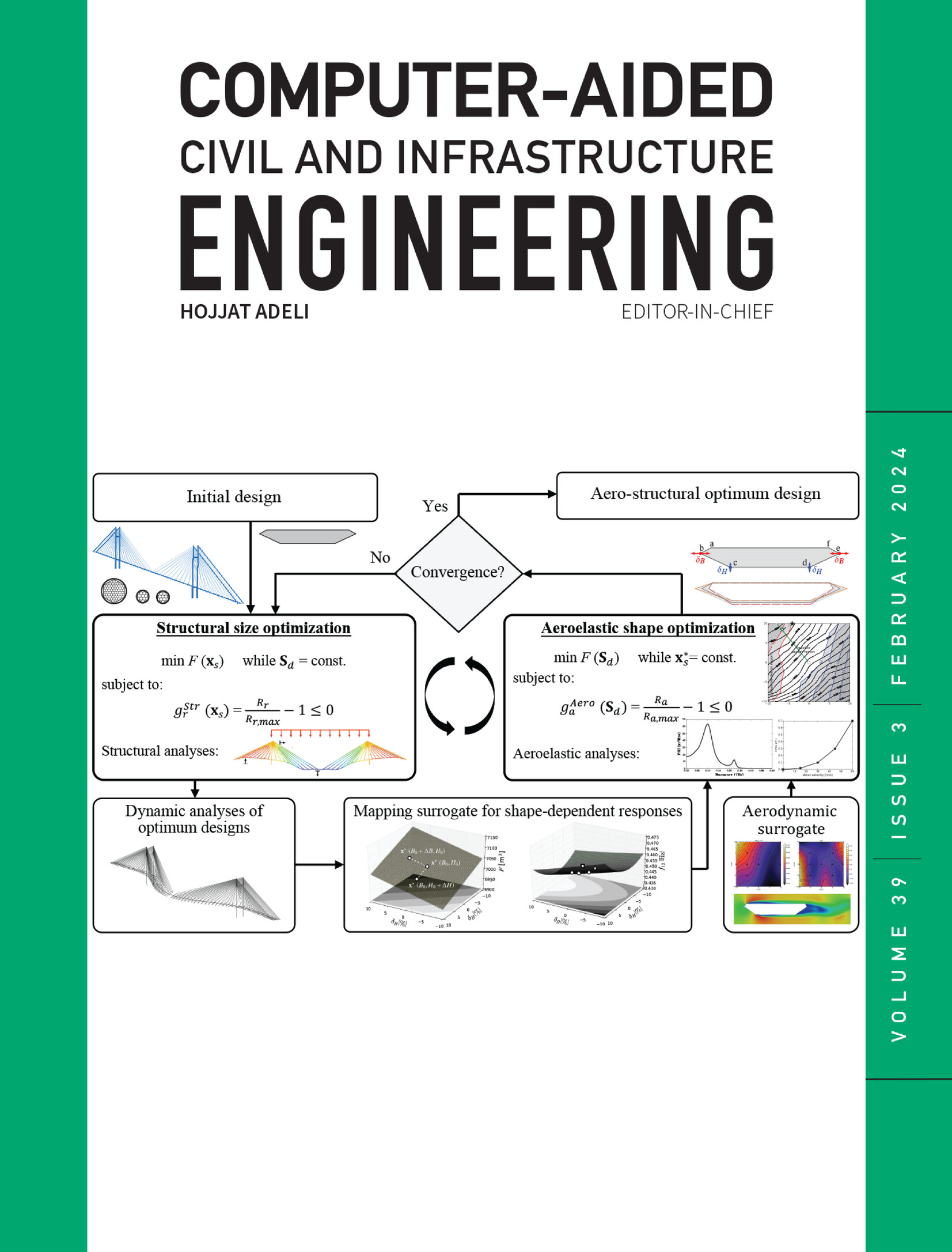Self‐supervised domain adaptive approach for extrapolated crack segmentation with fine‐tuned inpainting generative model
IF 8.5
1区 工程技术
Q1 COMPUTER SCIENCE, INTERDISCIPLINARY APPLICATIONS
引用次数: 0
Abstract
The number and proportion of aging infrastructures are increasing, thereby necessitating accurate inspection to ensure safety and structural stability. While computer vision and deep learning have been widely applied to concrete cracks, domain shift issues often result in the poor performance of pretrained models at new sites. To address this, a self‐supervised domain adaptation method using generative artificial intelligence based on inpainting is proposed. This approach generates site‐specific crack images and labels by fine‐tuning Stable Diffusion model with DreamBooth. The resulting data set is then used to train a crack detection neural network using self‐supervised learning. Evaluations across two target domain data sets and eight models show average F1‐score improvements of 25.82% and 17.83%. A comprehensive tunnel ceiling field test further demonstrates the effectiveness of the method. By enhancing real‐world crack detection capabilities, this approach supports better structural safety management.基于自监督域自适应的外推裂纹分割方法
老化基础设施的数量和比例不断增加,因此需要进行精确的检查,以确保安全和结构稳定。虽然计算机视觉和深度学习已广泛应用于混凝土裂缝,但领域转移问题往往导致预训练模型在新站点的性能不佳。为了解决这一问题,提出了一种基于生成式人工智能的自监督域自适应方法。该方法通过微调稳定扩散模型与DreamBooth生成特定站点的裂纹图像和标签。然后使用结果数据集来训练使用自监督学习的裂纹检测神经网络。对两个目标域数据集和八个模型的评估显示,F1得分平均提高了25.82%和17.83%。巷道顶板综合现场试验进一步验证了该方法的有效性。通过增强真实世界的裂缝检测能力,该方法支持更好的结构安全管理。
本文章由计算机程序翻译,如有差异,请以英文原文为准。
求助全文
约1分钟内获得全文
求助全文
来源期刊
CiteScore
17.60
自引率
19.80%
发文量
146
审稿时长
1 months
期刊介绍:
Computer-Aided Civil and Infrastructure Engineering stands as a scholarly, peer-reviewed archival journal, serving as a vital link between advancements in computer technology and civil and infrastructure engineering. The journal serves as a distinctive platform for the publication of original articles, spotlighting novel computational techniques and inventive applications of computers. Specifically, it concentrates on recent progress in computer and information technologies, fostering the development and application of emerging computing paradigms.
Encompassing a broad scope, the journal addresses bridge, construction, environmental, highway, geotechnical, structural, transportation, and water resources engineering. It extends its reach to the management of infrastructure systems, covering domains such as highways, bridges, pavements, airports, and utilities. The journal delves into areas like artificial intelligence, cognitive modeling, concurrent engineering, database management, distributed computing, evolutionary computing, fuzzy logic, genetic algorithms, geometric modeling, internet-based technologies, knowledge discovery and engineering, machine learning, mobile computing, multimedia technologies, networking, neural network computing, optimization and search, parallel processing, robotics, smart structures, software engineering, virtual reality, and visualization techniques.

 求助内容:
求助内容: 应助结果提醒方式:
应助结果提醒方式:


